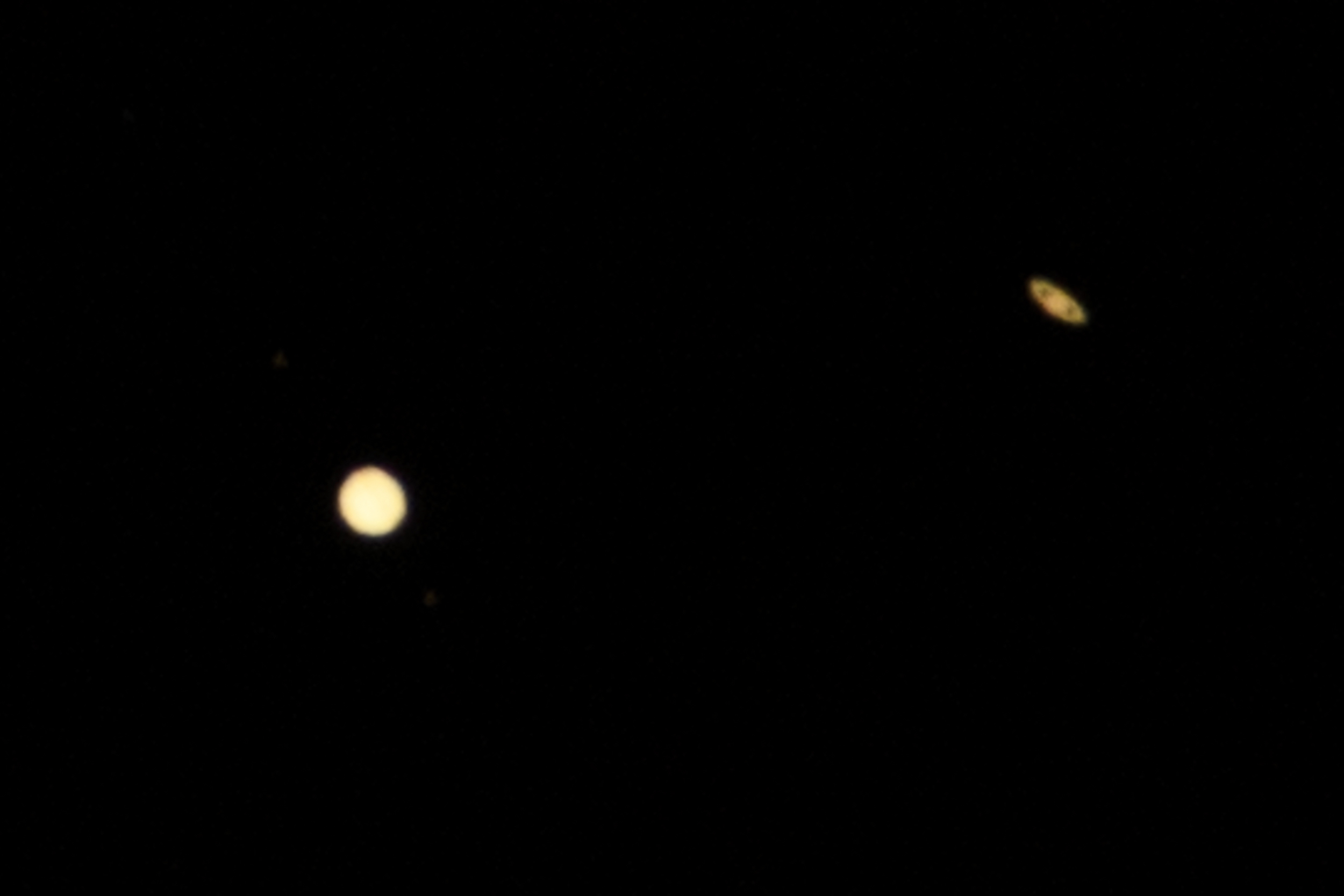Stunning telescope image of Jupiter and Saturn's Great Conjunction will amaze you
See the meeting of planets in detail Galileo could have only dreamed of.

An amateur astro-photographer captured a stunning image of the “Great Conjunction" of Jupiter and Saturn Monday night (Dec. 21), revealing the solar system’s giant and its moons just a fingernail-width away (from our perspective) from Saturn, whose rings are shockingly clear in the night sky.
Though the image was captured with a camera attached to a telescope, to the naked eye the planet duo appeared almost like a single bright star in the sky, also known as the Christmas Star.
But the conjunction, which brought the giant planets closer together in Earth's night sky than they had appeared in 800 years, didn't actually involve the two planets overlapping. At their nearest, they appeared just 0.1 degrees apart in the sky. That's close, but still far enough apart to resolve the two planets through a telescope, as the below image by South Carolina meteorologist Ed Piotrowski demonstrates.
The #GreatConjunction of #Jupiter and #Saturn thru my telescope just after 6pm. 4 of Jupiter's moons; Europa, Ganymede, Io & Callisto, and Saturn's Titan moon visible. Stacked many images for more clarity and color. Nexstar Celestron 6SE with Nikon D750 attached. #scwx #ncwx pic.twitter.com/vzP2IAuFnSDecember 22, 2020
That's Saturn visible with rings on the right side of the image, and Jupiter on the left. Jupiter's four largest moons form a line passing through the planet, with Europa at the bottom, Ganymede next up the line, then Io and Callisto. Saturn's moon Titan is even visible.
All these features are visible with a consumer telescope — Piotrowski used a Nexstar Celestron 6SE with a Nikon D750 attached — but no human being saw Jupiter and Saturn as anything but points of light until the Italian astronomer Galileo Galilei turned his telescope to the sky in 1609 and spotted those four moons and a year later Saturn's rings. Titan wasn't seen until 1655, when the Dutch astronomer Christiaan Huygens noticed it through his scope.
Related: The 12 strangest objects in the universe
Saturn and Jupiter weren't actually especially close together during the conjunction. As Piotrowski pointed out, Jupiter is currently about 550 million miles (890 million kilometers) from Earth, or about 5.9 times Earth's distance to the sun. Saturn is about 1 billion miles (1.6 billion km) from Earth, or about 10.8 times Earth's distance from the sun. Relative to each other, the planets were a whopping 450 million miles (724 million km) apart.
Sign up for the Live Science daily newsletter now
Get the world’s most fascinating discoveries delivered straight to your inbox.
They appeared close together from Earth because of a coincidence: Jupiter's orbit took it almost exactly onto the line between Earth and Saturn. From Jupiter's perspective, there wouldn't have been any conjunction. And an observer on Saturn would have seen a great conjunction of Earth and Jupiter.
Originally published on Live Science.











